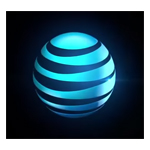 AT&T mobile 5G trials are achieving gigabit speeds, the carrier said in a blog post today. The speeds were achieved in trials in three cities using millimeter wave spectrum, the company said.
AT&T mobile 5G trials are achieving gigabit speeds, the carrier said in a blog post today. The speeds were achieved in trials in three cities using millimeter wave spectrum, the company said.
“[W]e’re confident we have all the answers we need to deploy a mobile 5G network that works for people all over the country,” wrote Melissa Arnoldi, president of AT&T Technology & Operations, in the blog post.
Arnoldi reiterated AT&T’s previously stated goal to be the first U.S. carrier to launch standards-based mobile 5G to customers this year. AT&T has said it will offer service in 12 cities in 2018 and has named three of them – Atlanta, Dallas and Waco, Texas.
Don’t expect AT&T’s 5G service to support gigabit speeds at initial launch, however– and don’t expect the company to rely totally on millimeter wave spectrum for 5G.
In an email to Telecompetitor, an AT&T spokesperson said the company’s initial 5G deployments will be in millimeter wave spectrum bands, but “then we will use our existing low- and mid-band spectrum holdings to deploy 5G more widely.”
Asked about launch speeds, the spokesperson said, “Ultimately, we expect to reach theoretical peak speeds of multiple gigabits per second on devices through our mobile 5G service.”
AT&T Mobile 5G Trials
Waco was one of the three cities in which AT&T trials demonstrated gigabit speeds. The other two cities were Kalamazoo, Michigan and South Bend, Indiana.
Arnoldi’s details about the trials included several important pieces of information.
In Waco, the company used a 400 MHz channel – a much broader channel than carriers have used to date for commercial service. Such broad channels generally are available only at very high-frequency bands—hence the use of millimeter wave spectrum. (While some sources define millimeter wave spectrum as ranging from 30 GHz to 300 GHz, others consider the 28 GHz band to be part of the millimeter wave band.)
The challenge with millimeter wave spectrum is that it doesn’t support service over great distances. The AT&T blog post offers some detail about this.
The company observed wireless speeds of approximately 1.2 Gbps in a 400 MHz channel over a distance of 150 meters (about 492 feet) in Waco. That was the distance between the cellsite and the retail location where measurements were made.
In Kalamazoo, AT&T observed 1 Gbps speeds under line-of-sight conditions over distances as great as 900 feet.
These data points illustrate what technologists have been saying about 5G in millimeter wave bands: Cellsites will have to be deployed more densely than they traditionally have been, which may not be practical everywhere, so it’s not surprising that AT&T plans to use a mixture of millimeter wave and other spectrum bands to support 5G.
Verizon also has millimeter wave spectrum it plans to use for 5G but has indicated that it also will use other spectrum bands in some areas.
T-Mobile plans to deploy 5G initially in the 600 MHz band – a strategy that will enable the company to quickly cover large areas but will not support maximum speeds. The company also plans to use some high-frequency 28 GHz spectrum, potentially supporting higher speeds.
Sprint has considerable spectrum holdings and also has announced 5G plans, but its 5G announcements have emphasized its mid-band spectrum holdings.
Latency
AT&T also noted in today’s blog post that its 5G testing in Waco achieved latency in the range of 9-12 milliseconds. The blog post also cited MIT research that showed that human brain latency essentially is 13 milliseconds.
Lower latency is a key goal for 5G networks, as carriers expect the service to eventually support applications such as connected cars, for which low latency will be critical.
This post has been updated to include additional information from AT&T.

